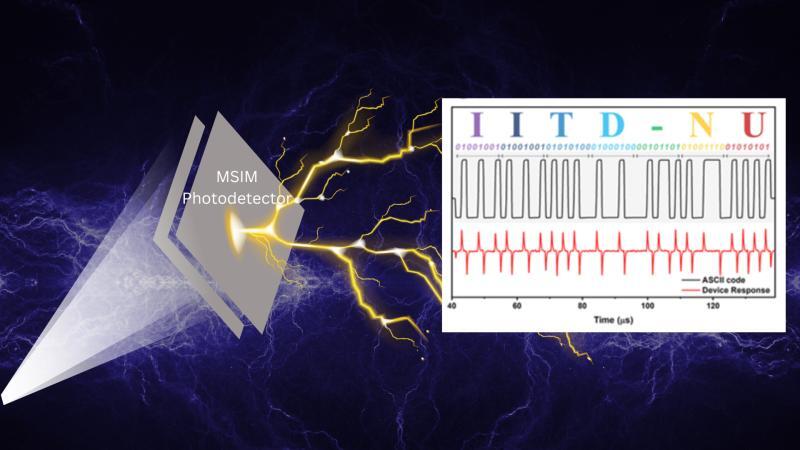
Cutting-edge MSIM Photodetector Revolutionises Communication
The rapid advancement of technology has led to an unprecedented demand for high-speed and energy-efficient communication systems. In this pursuit, researchers have been working tirelessly to develop innovative solutions that can cater to the growing needs of the industry. Recently, a team of scientists from the Indian Institute of Technology (IIT) Delhi has made a groundbreaking discovery in the field of photodetection, which is set to revolutionize the way we communicate.
The team has developed a novel Metal-Semiconductor-Insulator-Metal (MSIM) photodetector that boasts ultra-fast and self-powered performance. This breakthrough technology has the potential to transform the landscape of optical communication, enabling high-speed data transfer while minimizing energy consumption.
The MSIM photodetector: A Game-Changer in Photodetection
Traditional photodetectors rely on external power sources to operate, which can be a significant drawback in energy-hungry applications. In contrast, the MSIM photodetector developed by the IIT Delhi team operates without the need for external power, making it an attractive solution for energy-efficient communication systems.
The photodetector’s unique design features an organic semiconductor material that is sandwiched between two metal electrodes. This configuration enables the detector to harness the energy from incoming light, allowing it to operate at speeds of up to 5.6 MHz without the need for external power.
The significance of this achievement cannot be overstated. In the past, photodetectors that operated without external power were limited by their slow response times, making them unsuitable for high-speed applications. The MSIM photodetector’s ultra-fast performance, on the other hand, makes it an ideal solution for applications that require high-speed data transfer.
High Sensitivity and Speed: The Key to Energy-Efficient Communication
The MSIM photodetector’s high sensitivity and speed are the key to its energy-efficient performance. The detector’s ability to operate at high speeds ensures that data can be transmitted quickly and efficiently, reducing the need for energy-hungry processing and amplification.
Moreover, the photodetector’s high sensitivity allows it to detect even the faintest signals, reducing the need for multiple amplification stages and minimizing energy consumption. This not only reduces the overall energy requirements of the system but also enables the use of smaller, more efficient power sources.
Applications of the MSIM Photodetector
The MSIM photodetector’s energy-efficient and high-speed performance makes it an attractive solution for a wide range of applications, including:
- Optical Communication Systems: The MSIM photodetector’s ultra-fast performance makes it an ideal solution for high-speed optical communication systems, enabling fast and reliable data transfer over long distances.
- Energy-Harvesting Devices: The photodetector’s ability to operate without external power makes it an attractive solution for energy-harvesting devices, such as solar-powered sensors and devices.
- Internet of Things (IoT) Devices: The MSIM photodetector’s low power consumption and high sensitivity make it an attractive solution for IoT devices, enabling energy-efficient and reliable data transfer over long distances.
- Biomedical Applications: The photodetector’s high sensitivity and speed make it an attractive solution for biomedical applications, such as optical coherence tomography and optical imaging.
Conclusion
The development of the MSIM photodetector by the IIT Delhi team is a significant milestone in the pursuit of energy-efficient and high-speed communication systems. The photodetector’s ability to operate without external power, while maintaining ultra-fast performance, makes it an attractive solution for a wide range of applications.
As the world continues to rely increasingly on digital communication, the need for innovative solutions that can cater to the growing demands of the industry is more pressing than ever. The MSIM photodetector’s energy-efficient and high-speed performance makes it an ideal solution for the future of communication, and its potential applications are vast and varied.
Source:
https://researchmatters.in/news/novel-self-powered-fast-performance-photodetector-iit-delhi






